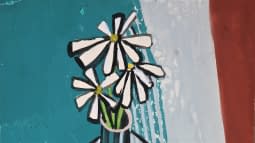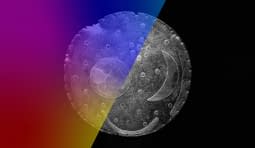Interview with Dr. Georg Kremer from Kremer Pigmente
Portrait Kremer Pigments
The unique history of the "Kremer Pigments" company began with a lost blue pigment. When chemist Dr Georg Kremer received a request from a restorer for the specific "Smalte" pigment, which was no longer for sale in 1970, he started to produce an appropriate blue pigment himself in his own laboratory using a traditional recipe. Thus, he laid the foundation for the family business. Today, it successfully runs offices in Munich, Germany as well as New York, USA and distributes its products worldwide from there. In the colour mill in Aichstetten in the Allgäu region, over 100 of the more than 1,500 pigments offered are still produced by hand today.
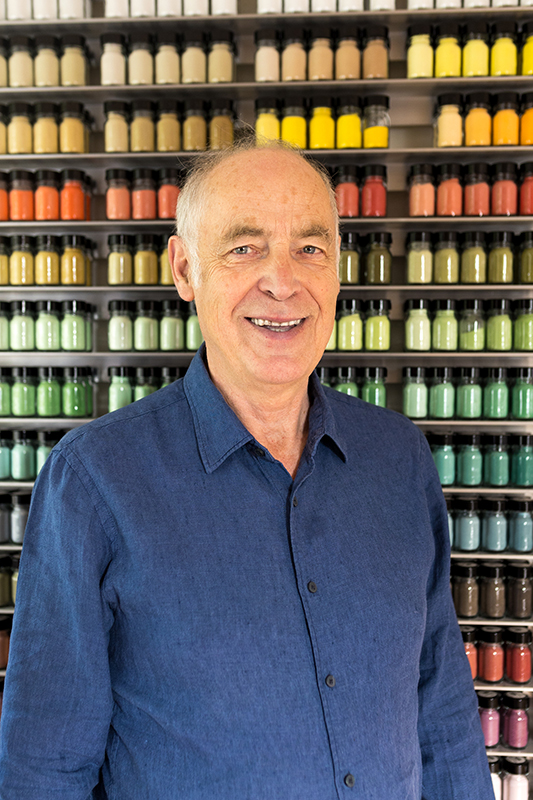
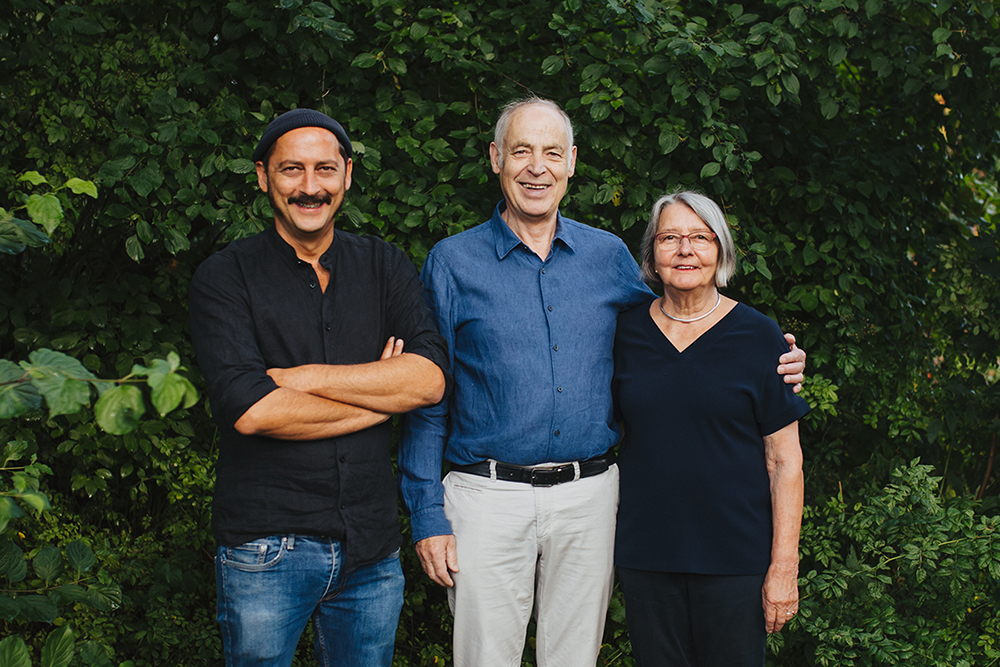
Introduction
As a trained painting restorer, I became familiar with the name "Kremer Pigments" early on. When you opened the heavy door of the painting and sculpture studio at the University of the Arts in Bern, Switzerland, a huge glass showcase filled with coloured pigments, colourants and binders in jars and containers greeted you.
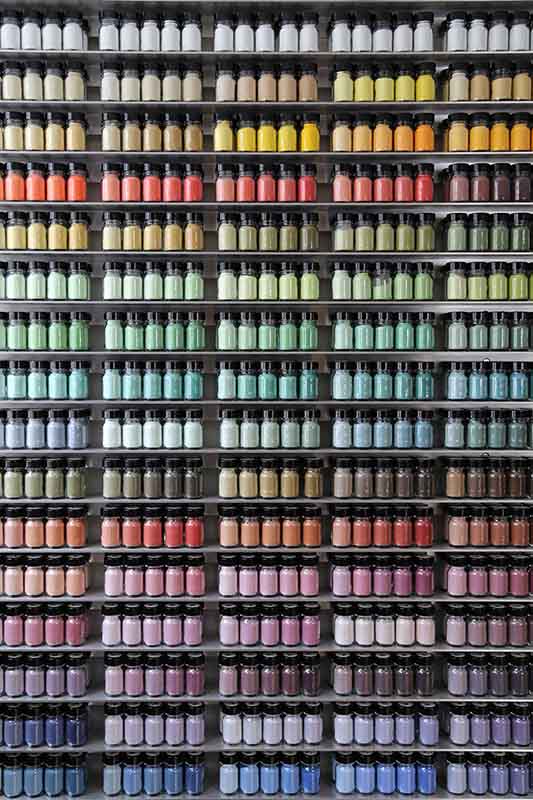
Especially for the restoration measure of retouching, one deals with the subject of the colour use of an artist. The study of pigment history, the historical production methods, e.g. of oil and tempera paints, the chemical composition and the characteristic properties of certain pigments, is indispensable in order to understand the painting in its (aged) existence and to be able to retouch the imperfections in the layer of paint in a targeted manner. Which pigments and fillers did the artist use at the time for his coloured primer or for the painting colour? How can I adjust my retouching medium accordingly? Material analyses (e.g. FTIR and Raman spectroscopy) can be used to recognise and identify the structure of the paint (pigment, filler, binder). This forms the basis for the composition of the putty and retouching. The pigments and fillers used in my studies all came from Kremer Pigmente.
The joy and enthusiasm about being able to ask Kremer Pigmente a few questions themselves was therefore very great.
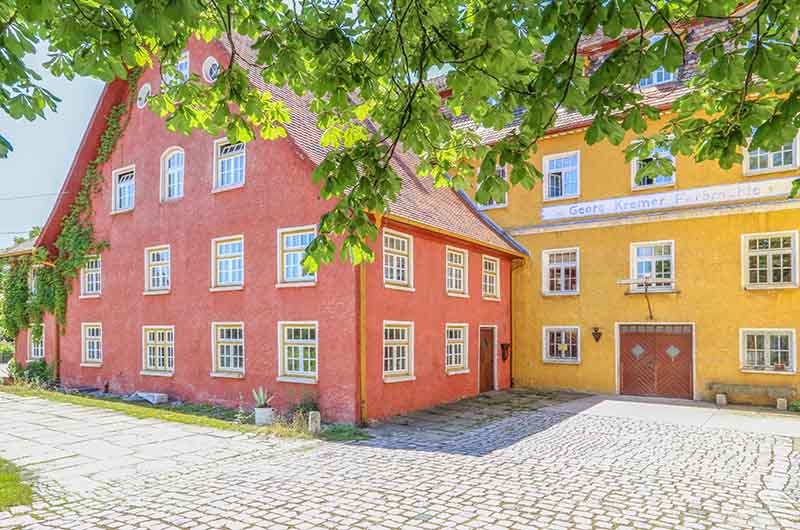
Unfortunately, we were not able to be on site at the colour mill for the interview, but we look forward to a future visit. Many thanks to Mrs Bartenschlager for arranging the interview with Dr Georg Kremer and for sending us the photos.
Question and answer session
LK: You recreate historical, partly forgotten pigments. How difficult is it to find some of the old, traditional recipes? Do you get advice from art historians or art scholars?
GK: Our research into old recipe collections has given us a lot of knowledge about the production of historical pigments. With this knowledge and my training as a chemist, we have been able to keep improving the production over the past 40 years. Our work leads to the rediscovery of new historical pigments every year. We receive the information from the restorers: there is an unknown pigment. Through chemical investigations we can understand the new pigment and then our work of restoration/re-procurement begins.
LK: What techniques are used in the production of historical pigments?
GK: Today, over 250 pigments are produced in the colour mill according to old recipes. Raw materials from all over the world are grinded, sieved or filtered into fine pigment powders in elaborate manual work. For some raw materials, the large lumps are pre-crushed by hand and the fragments are then hand-sorted according to quality. The good pieces are then processed into pigment. Dye plants are extracted and processed with alum to make pigment. Various metal salts are processed at high temperature in a solid-state reaction to produce blue and yellow pigments.
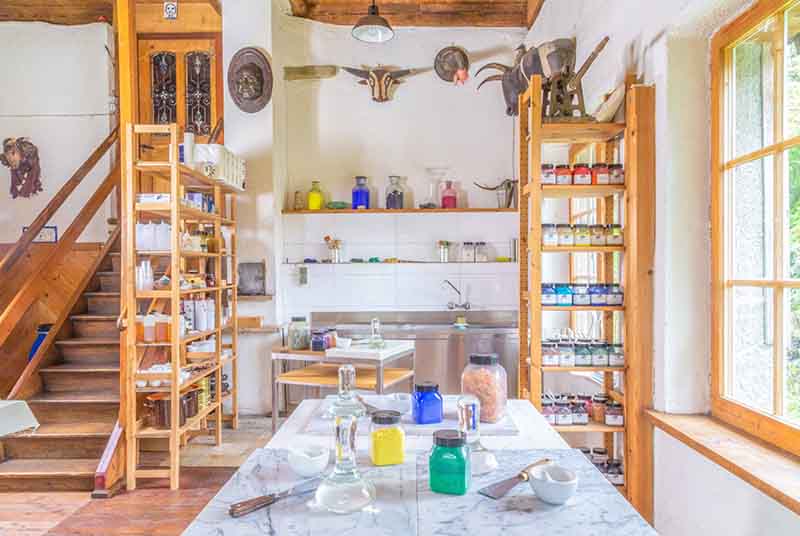
LK: You also create your own shades, independently of already existing recipes. How can one imagine this process of creation? Do you discover, perhaps by chance, an exciting material and then think about how to make a pigment from it? Or does this happen as a result of specific order enquiries?
GK: Our customers' wishes for materials to be used in restoration and for the most modern contemporary artistic painting demand a great deal of our product development. The questions from our customers from all over the world always require targeted research and new product developments based on this research. Within the scope of these experiments, new pigments have already been developed, which we then included in our range of products. Most of the earth colours we have developed were found by chance. If you travel through the world with open eyes, you can't overlook all the different colours in the mountains.
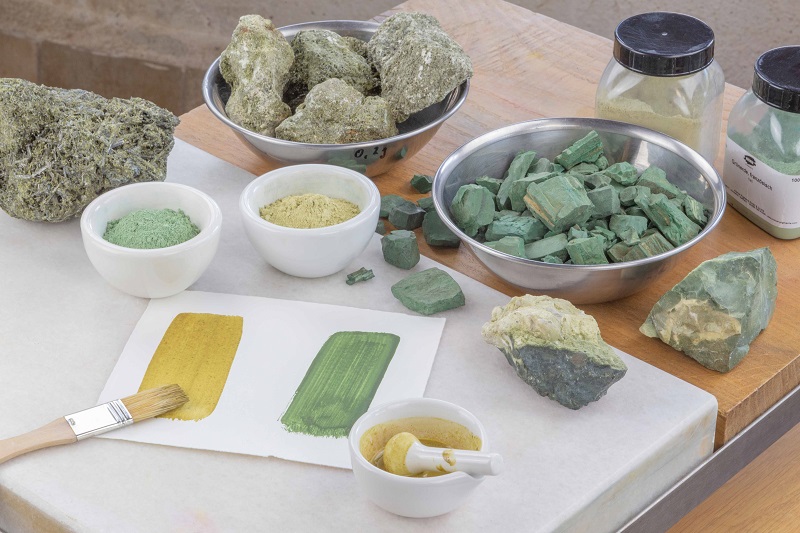
LK: How long does it take to develop a pigment until it has the desired composition or (optical) characteristic properties?
GK: First of all, the colour shade must be right. Then the processability is optimised. Afterwards, the light fastness and the resistance in different binders are tested. The whole process can easily take 2 to 3 years.
LK: For a restorer, resistance against ageing is of great importance. What is important for you in the production of pigments, or what criteria must the end product fulfil?
GK: For us, the most important quality of a pigment is that the customer receives an advantage with this pigment. The advantage can have very different properties. Mostly, the "historical" correctness, i.e., that the pigment was used in this form in the past, is the most important criterion. For restorers, colour tone and durability are usually equally important. For violin makers, the historically correct colour tone from the historically correct pigment is the most important aspect; lightfastness is less important for instruments that are usually kept in violin cases. We have also had requests from artists who wanted a fast-fading pigment for an installation or an action.
LK: You also accept special orders or requests for the production of very individual pigments. For example, your company produced pigments made of glacier rock for the artist Peter Lang. That means you also work directly with artists. Do the results of such commissions also find their way into the wider market?
GK: Our clients are often artists. They are very often looking for new forms of beauty. Sometimes artists find something very beautiful in nature, and then they want to use it in their work. If the raw material is available in sufficient quantities, we sometimes turn it into a product for everyone. From the stones for the special colours for Peter Lang we were able - with his support - to produce the Icelandic Colour Set for all our customers.
LK: For the artist Tobias Rehberger you made a pigment out of his clothes. One can assume that this was launched especially for him. What was the craziest request for you so far?
GK: We like to work on the realisation of difficult issues. And actually, we haven't had any really crazy requirements yet. Or, to put it another way, we have been able to realise all wishes. For example, one customer wanted a range of never-drying oil paints - no problem for us. For Mr. Rehberger we produced a black pigment from his raw material, the output was already a bit scarce for him. So, we couldn't produce a Rehberger black for other customers.
LK: The real purple was originally made from purple snails. Are there any shades that you had to stop using for environmental, ethical or sustainability reasons?
GK: For Kremer Pigments, sustainability and ecology have always been a guiding principle. We produce our own electricity with a generator in our hydroelectric power plant. For the packaging of our products, we use as much glass, paper and metal as possible. Unfortunately, to this day, the use of plastics can only be limited, not avoided. The production and distribution of materials for painting - in the broadest sense - is ethical for us if we give the customer precise information about the product. The product - whether pigment or painting medium - cannot be judged ethically as a raw material for painting, only its use by the customer is subject to ethical judgement.
For the production of purple, we need purple snails, which we obtain from fish markets in Italy, Spain and France. Purple is very time-consuming and laborious to produce, and we still make it from purple snails as we did many thousands of years ago. The process is difficult and requires some experience. According to Pliny's process, purple snails can also be used to produce a pigment called purpurissum, which makes a pigment that is suitable for painting accessible. Pure purple is actually only used for dyeing.
Our understanding of sustainability in production means for us manufacturing methods without the consumption of fossil fuels. Fossil raw materials in the narrower sense are substances such as natural gas, crude oil and coal. The CO₂ footprint of a pigment is lower the fewer of these three raw materials are required for its production. Regardless of the type of energy extraction and the corresponding transport expenses, a natural product, such as a coloured earth, is always more climate-neutral than processed products, such as synthetic iron oxide. Also, the use of cultivated, plant-based materials, such as indigo, is more sustainable than the use of the synthetic products of the same name (in this case, synthetic indigo). These considerations are of particular importance for the selection of binders. There is a ban on the use of white lead. It may only be used in the EU for the conservation and restoration of listed works of art. All chromate pigments dissolve somewhat in water and are therefore toxic. They have been banned in the European Union since 2015.
Due to the latest regulation of the European Union, it is unfortunately no longer possible for us to offer genuine ivory black, the deepest black pigment for painting, beginning in 2023.
LK: And is there a pigment that you have not yet produced but would definitely like to achieve in the future? And what does the company hope to achieve in the future? Can you tell us something about that?
GK: Very beautiful madder lakes can be made from madder roots, which used to be cultivated all over Europe. So far, we produce a range of nine different madder lakes made from madder root with shades ranging from light pink to dark brown. At the moment we are working on improving the manufacturing process for a more colourful dark red madder pigment. Hopefully this will work.
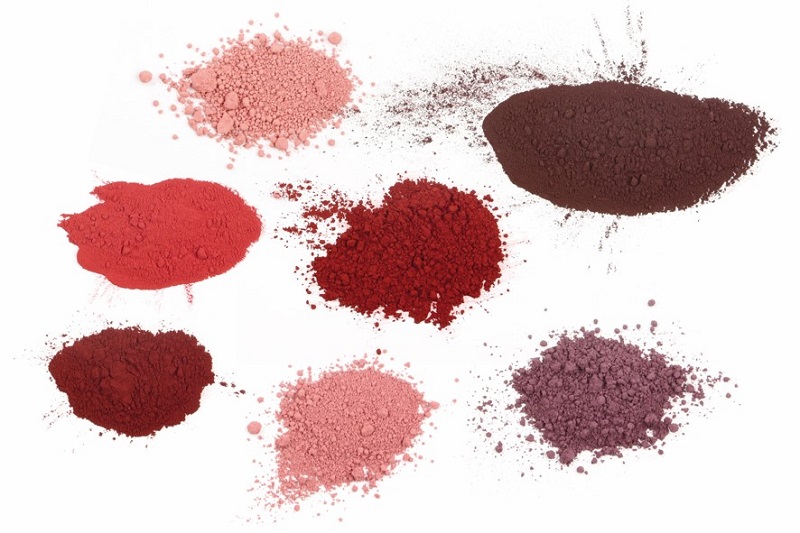
LK: Apart from restorers, your clientele also includes artists. They would be interested to know how the different price groups of pigments are classified.
GK: Our pigments are mainly used for non-industrial surface designs. Customers are looking for the best quality and the widest selection in our range for their projects. Unfortunately, some products are very expensive due to the difficult production or the expensive raw materials. Cobalt blue, for example, is considerably more expensive than ultramarine blue. This is because cobalt salts are used for the cobalt blue and aluminium compounds are used for the ultramarine blue. Cobalt is much rarer than aluminium, which is why it is much more expensive.
LK: Do you have a favourite pigment yourself?
GK: Nature only offers beautiful colours. For a certain design you need a selection - but there are so many beautiful colours that until today I could not choose the ONE favourite pigment for me. For every application there is THE most beautiful colour pigment.
LK: For art24, the production of a rainbow pigment would of course be exciting because of the colour gradient in our company logo. Do you think such a pigment production would be possible? Would you have an idea how this could be designed?
GK: The rainbow is formed out of small drops of water that are hit by the sun's rays at different angles. To recreate this effect, different pigments must be used next to each other at a fixed viewing angle. COLORSTREAM® pearlescent pigments are based on synthetically produced, optimally plane-parallel SiO2 (silicon dioxide) platelets coated with metal oxides. The very thin and flat pigment platelets enable extraordinary angle-dependent interference effects. We refer to these multi-colours as "MAGIC". In very thin layers against a dark background, possibly in combination with other transparent colour pigments - the COLORSTREAM® effect pigments really stand out, such as COLORSTREAM® T20-01 WNT Viola Fantasy, green-violet, COLORSTREAM® T10-04 Lapis Sunlight, golden-green to dark blue or COLORSTREAM® T10-02 ARCTIC FIRE, Magic Fire, silver-green-red. With the right sequence of our coloured Magic Pigments you could create an appealing rainbow. We will develop such a rainbow in the winter.
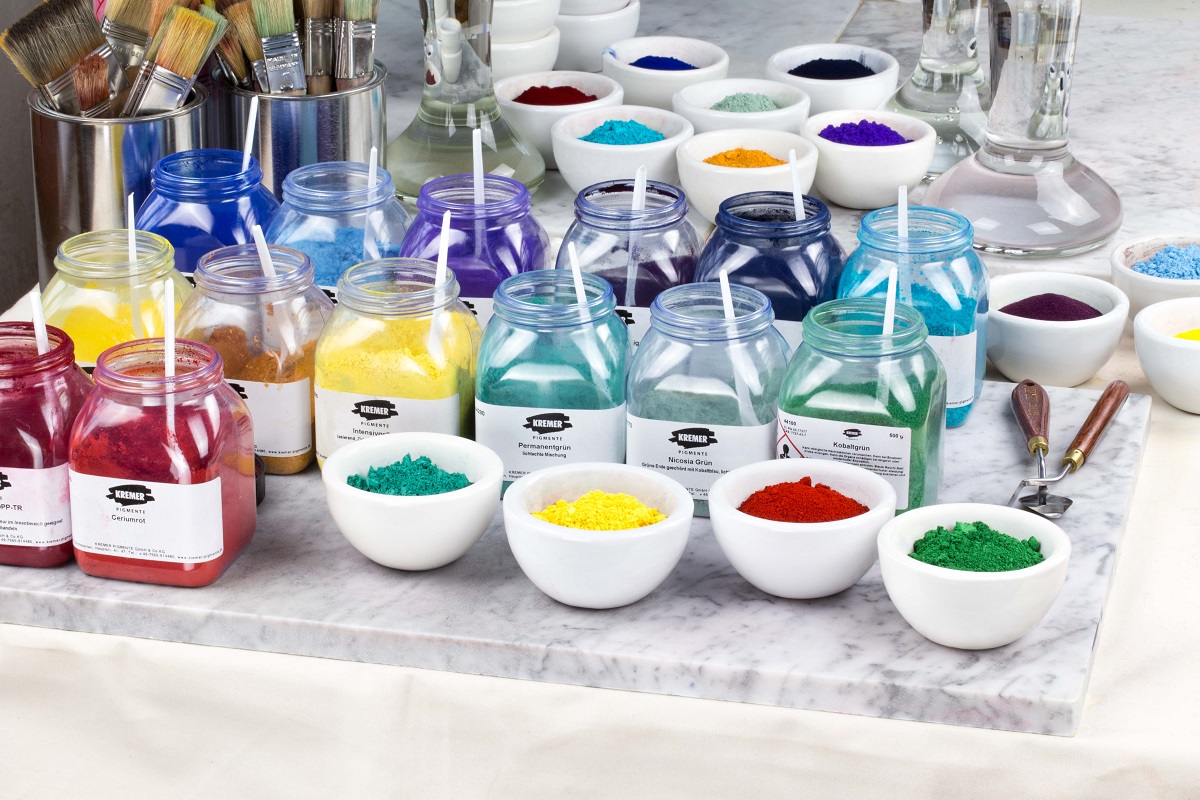
I would like to thank Kremer Pigments for their immediate willingness to be interviewed and for their cordiality.





